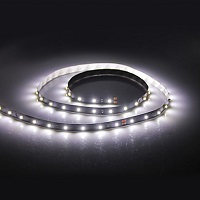
For years now illuminated storefront signs have been using LED technology and it only makes good business sense.
1. Up to 90% more efficient than fluorescent or neon systems with the same light output.
2. Lower energy costs.
3. Lower voltage (50 volts compared 10,000 volts or more) poses less fire and property risk, helping with lower insurance premiums.
4. 50,000 to 100,000 hour product life, resulting in fewer system changes and disruptions, and lower maintenance costs.
5. Rebate offers up to 50% directly from Manitoba Hydro.
How does this help my existing business you ask? If you already have older signs that use fluorescent or neon technology there is still hope and reason #5 maybe the most compelling. At this time MB Hydro currently still offers rebates through their Commercial Lighting Program (CLP) that can help your business go green and make the move to more reliable and energy efficient lighting.
 Full details of the program can be found in the links below but if it seems too daunting we can help. Electra Sign Ltd. has been a proud partner in supporting the Manitoba Hydro Power Smart program. We will be happy to submit the necessary applications for projects for converting your existing signs to LED. The rebate program offers up to 50% directly from Manitoba Hydro.
Full details of the program can be found in the links below but if it seems too daunting we can help. Electra Sign Ltd. has been a proud partner in supporting the Manitoba Hydro Power Smart program. We will be happy to submit the necessary applications for projects for converting your existing signs to LED. The rebate program offers up to 50% directly from Manitoba Hydro.
Although we cannot guarantee the funds for each rebate we will make every effort to provide an approximate value.
Manitoba Hydro Commercial Lighting Program (CLP) Links:
Website: Manitoba Hydro Commercial Lighting Program (CLP)
(CLP) Program Guide: (PDF, 452 KB).
Serving Western Canada with the brightest solutions, call the professionals at Electra Sign Ltd. Winnipeg today.

For more than three decades Electra Sign has proven that signage and the technologies in this industry, continue to evolve. Our custom manufacturing of signs provides a personalized approach to each client we work with. One of the questions often considered is the materials that allow our LED lighting to better showcase your signage.
With the above said, let me break down the difference between a couple of the most widely used materials – Polycarbonate and Acrylic.
POLYCARBONATE is mostly referred to by the brand name – Lexan. It has high strength, toughness (up to 250 times more impact resistance than glass), heat resistance, and provides enhanced color stability when paired with our digital paints and vinyl applications. One of the biggest advantages of polycarbonate is its impact strength. Known to be virtually indestructible, tests continue to show the strengths in comparison to products such as acrylic (Plexiglas). Polycarbonate is more flexible and can be easier for a machine with milling, turning, and sawing than acrylic because it can not shatter. However, not without its disadvantage polycarbonate will not diffuse backlighting as much as its signage partner – Acrylic.
ACRYLIC more commonly recognized as Plexiglas has almost 20x the impact resistance of glass and can crack more easily than Polycarbonate based on less flexibility. It diffuses the light throughout the sign more effectively because of the type of material. For this reason, many signs that are cut into curves (Channel letters, contoured cabinets, specialized logo pieces, etc.) will be done with Acrylic. These are signs usually installed onto the building interior and exteriors whereas pylon signage will employ Polycarbonate.
This video shows the physical natures of both materials being tested against extreme measures and provides a more detailed example…
Polycarbonate vs Acrylic Plastic
Award-winning designs spotted throughout the West and into Ontario - Let Electra Sign Ltd. Winnipeg Manitoba improves your branding today.
To directly speak with a representative, call:
Winnipeg204.452.6168